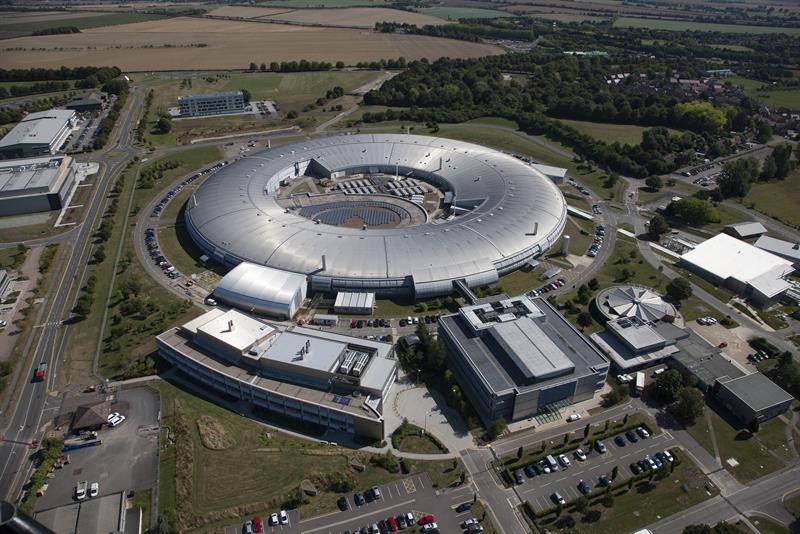As there was only one iron blast furnace in Britain at the time of the construction of the Mary Rose, the cannonballs all feature the same construction.
Dr Schofield explained: “This means that once we've found the solution, then the cannonballs can be preserved for generations to come and the science made available globally to all those whose conservation work involves maritime or iron-rich artefacts.
“We have taken just 12 of the cannonballs – less than 1% of the Mary Rose’s stock but enough to provide statistical validity of our findings – to investigate different methods of conservation through synchrotron science,” she continued.
 Diamond Light Source is the UK's national synchrotron and offers many non-destructive techniques that can be used to unlock the secrets of and conserve ancient artefacts as well as helping develop vaccines and finding new ways to store energy.
Diamond Light Source is the UK's national synchrotron and offers many non-destructive techniques that can be used to unlock the secrets of and conserve ancient artefacts as well as helping develop vaccines and finding new ways to store energy.
Seawater corrodes iron by eating away at the metal and weakens its structure. Though the 1200 plus cannonballs began as a relatively similar set, since excavation they have been treated by different conservation methods.Diamond’s X-rays (that are 10 billion times brighter than the sun) make it possible to visualise the differences in the corrosion profiles and trace them to the treatments applied.
Already, Diamond has carried out research on the wood from the main ship, monitoring its treatment and current display environment and developing new conservation treatments.
Dr Schofield adds: “People often ask me what science has to do with the Mary Rose; the answer is ‘everything’. Facilities like Diamond allow us to find ways of conserving ancient artefacts – we need the detail Diamond offers because this process often starts at the cellular, molecular and atomic levels. Science is a vital part of conservation, and it’s great to know that we’re playing our part in preserving our cultural heritage.”
Next, the group will launch a long duration experiment, which will observe changes in the corrosion product during long-term immersion in various conservation treatments to monitor their effects.











